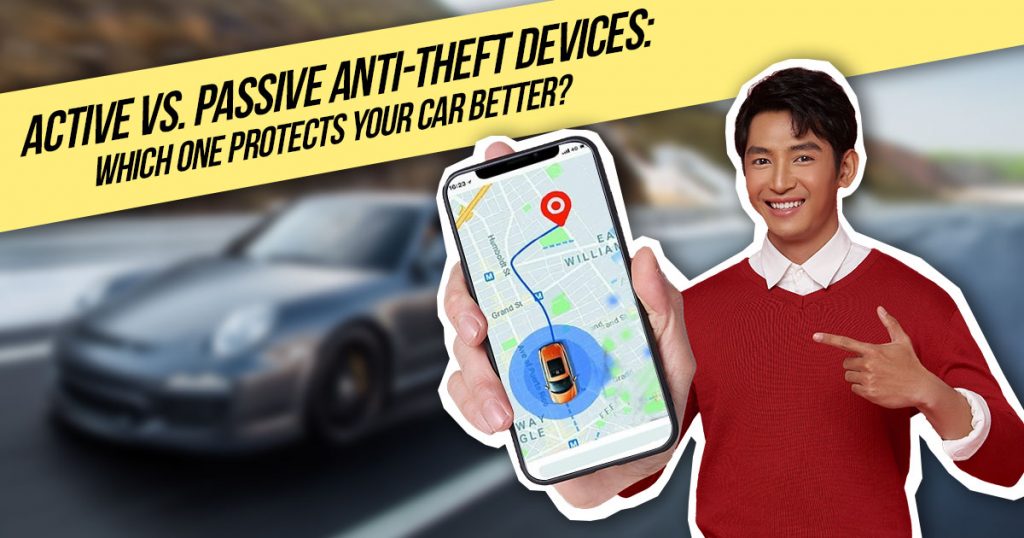Car theft is no joke. Did you know more than a million vehicles were stolen in the U.S. in 2023? That’s one car gone every 31.5 seconds! With numbers like that, protecting your ride just makes sense. Whether you park in a driveway, on the street, or in a garage, having the right anti-theft system can save you a ton of headaches. That’s where the decision between active vs. passive anti-theft devices comes in.
These systems are designed to make stealing your car way harder. The big difference between the two? One works automatically, while the other needs you to take action. Easy, right? Keep reading to learn what they do, how they work, and which might be a better fit for your lifestyle.
Passive Anti-Theft Devices – Hands-Off Protection
A passive anti-theft device basically takes care of business for you. You don’t have to press a button, toggle a switch, or even give it a thought. These systems turn on automatically when you remove the key, shut the doors, or walk away from your car with your key fob. It’s like having a silent bodyguard that’s always on duty.
Take modern cars, for example. Toyota and Honda models often include immobilizers, which disable the engine unless the car detects the right key. Fancy, huh? Tesla’s locking system is another cool example. It automatically locks the car just as you walk away.
Why Choose Passive Systems?
- Convenient: You don’t have to remember to arm it.
- Consistent: Protection is always active when needed.
- Insurance-Friendly: Many insurance companies offer discounts on cars with built-in passive systems since they reduce the risk of theft.
But hey, no system is perfect. Passive systems are great, but they can sometimes be a little buggy. Ever had your car doors lock themselves while you were unloading groceries? Yeah, not fun.
Active Anti-Theft Devices – When You’re in Control
On the other side, we’ve got active anti-theft devices. These require you to do something to protect your car. Whether it’s pressing a button on a remote, flipping a kill switch, or locking a steering wheel device like “The Club,” you’re in charge of turning it on.
Why is that a good thing? It gives you control. Want to load the trunk, grab your phone from the front seat, or hop in and out without any alarms? Active systems won’t get in your way.
High-end brands like BMW and Mercedes-Benz even send you reminders to arm the system via smartphone apps so you don’t forget. Pretty slick, huh?
Why Choose Active Systems?
- Control: You decide when the system is on or off.
- Fewer False Alarms: No annoying triggers while you’re moving around your car.
- Customizable: Many systems offer settings tailored to your needs.
The downside? You need to remember to engage in it. If you’re forgetful or in a rush, your car could be left unprotected.
Key Differences Between Passive and Active Anti-Theft Devices
Here’s a quick breakdown of how the two systems stack up:
| Feature | Passive Anti-Theft Device | Active Anti-Theft Device |
| Activation | Happens automatically | Requires you to manually turn it on |
| Ease of Use | Super simple and hands-free | Needs a little effort |
| Consistency | Always working – no “off” days | Depends on you remembering to set it |
| False Alarms | Sometimes triggered accidentally | Rarely goes off unexpectedly |
If you’re someone who forgets to lock your car or activate an alarm, passive might be the way to go. But if you like having more say in when and how your system works, active is the clear choice.
Extra Tips to Protect Your Car
No matter what system you choose, layering extra protection can make a huge difference. Here are some easy ways to make your car less appealing to thieves:
- Etch the VIN onto your windows. It’s cheap to do and makes your car harder to resell.
- Add a tracking device, like LoJack or Airtag, for better recovery chances if your car is stolen.
- Go for visible deterrents, like a steering wheel lock or brake lock. Thieves skip cars when they see extra security.
- Remove valuables from sight. Even an empty laptop bag on the seat can tempt someone to try breaking in.
According to the NICB, using a layered approach to vehicle protection makes it significantly harder for thieves to steal your car. That’s a huge win for peace of mind.
Which System is Right for You?
If you’re still unsure about which to go for, think about your habits. Are you someone who likes a hassle-free solution? Then go for a passive system. Or do you prefer to have full control over your car’s security? Active might be your better bet.
If you ask me, I’d say go for a combo of both for the best of both worlds. Modern cars, especially from brands like Volvo, already offer a mix of these systems. That way, you can rely on passive features daily and use active tools like steering wheel locks or kill switches for extra protection when needed.
Bottom line? Theft prevention is all about staying consistent. No matter which system you pick, make sure you use it every day and stay aware of your surroundings. After all, the best system in the world won’t work if it’s not armed, right? Happy driving, and keep your car safe out there!
